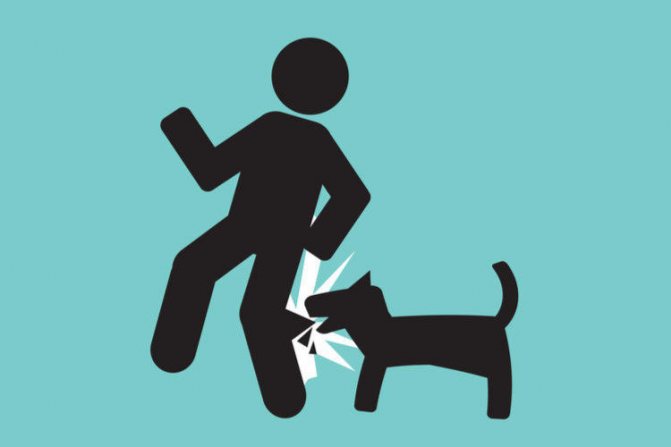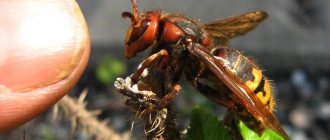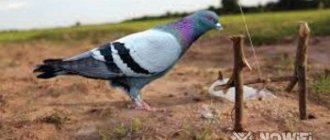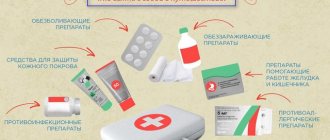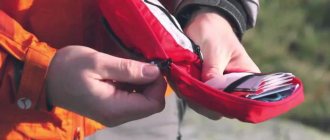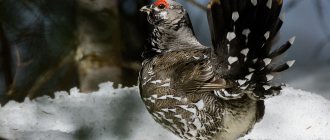No one is safe from a dog bite. If you seek medical help in a timely manner, the bite has no negative consequences, and the victim quickly comes to his senses. However, cases of death have been reported, especially if the wound was deep or the animal had rabies. It is necessary to understand the order of actions that should be performed if a dog bite is recorded.
Why a dog might bite
A dog most often bites when there is a feeling of danger or poor upbringing, accompanied by a lack of attention or cruelty to the animal.
The main reason for a dog to bite is its need to demonstrate its dominance in front of its owner and other family members. In such cases, she considers herself a leader and does not recognize anyone as an authority.
To protect yourself from a bite, you must take into account that the animal zealously protects objects that it considers personal property. These include toys and a plate. Therefore, you should not try to pick them up when she is eating or playing.
Other causes of a bite include:
- painful sensations;
- feeling of fear;
- disease;
- insufficient socialization.
A dog may bite in an attempt to protect its offspring. To avoid this, you need to arrange a secluded place for her and teach children to be careful with puppies.
Children can also provoke a bite when they begin to abuse an animal, because they often do not feel a sense of proportion.
What to do if you are bitten?
The main thing is don’t start treatment on your own and don’t expect everything to normalize on its own. The bite wound is life-threatening. Even if the attacking animal was not sick, problems can still arise. The fact is that conditions are created at the site of the wound for the rapid development of infectious and inflammatory processes.
Article on the topic
Dogs can be biters. How to protect yourself from rabies When an animal attacks a person, the first thing you need to do is pay attention to the “offender” himself. First, it is necessary to find out what caused the incident: the animal’s aggression, which can be caused by a disease, or its “duties,” that is, its inherent protective reflex. Secondly, you need to pay attention to the type of animal: an unusual or bad-looking dog already arouses suspicion. Thirdly, it is necessary to understand whether it was a domestic animal or not. A look at the dog’s neck and ears will help you draw such conclusions: the presence of a collar, mark or clip on the ear will indicate that the animal has an owner. It’s better to photograph the attacking dog, or even better, film it. This evidence can then help in court if the case cannot be resolved amicably. But, of course, this is only possible if there are some witnesses to the incident near the victim. The person who was bitten is unlikely to care about collecting evidence.
Symptoms after a dog bite
Bites are always accompanied by bleeding, since the integrity of the blood vessels is compromised. It can be quite strong and subsequently cause the death of the victim.
Damage to fighting breeds is especially dangerous, because they have powerful jaws. This often leads to fractures.
If an infection enters the wound as a result of a bite, inflammation will begin and the victim will experience the following symptoms:
- heat;
- weakness;
- soreness and redness at the site of the bite;
- enlarged lymph nodes;
- headache;
- purulent discharge from the wound.
Victims experience confusion and impaired mobility of the injured limb.
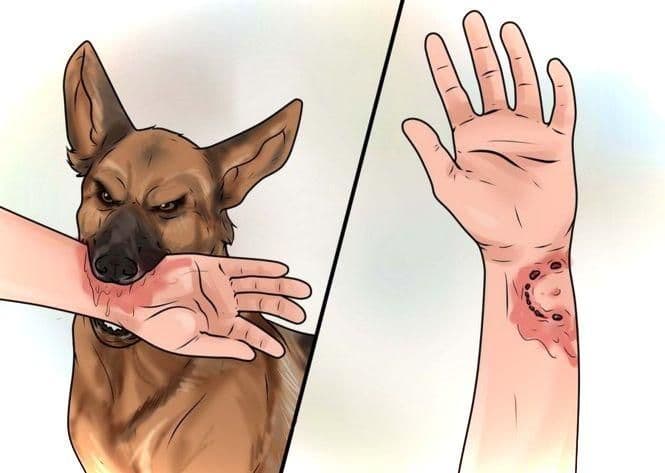
First aid for a dog bite
After a dog bite, the main task is to prevent infection from entering the bloodstream.
- First of all, you should wash the wound and treat it with an antiseptic. The best option for this is hydrogen peroxide. Iodine and brilliant green are used with caution, preventing them from getting into the wound.
- After this, a bandage is applied to stop the bleeding.
- If the bite is very painful, it is recommended to take painkillers.
- Given the high likelihood of contracting rabies or tetanus after injuries, the victim should consult a doctor who will refer him for vaccination.
Rehabilitation
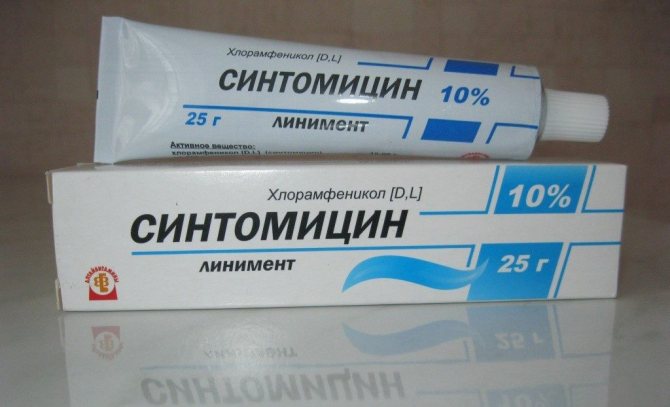
The duration of the recovery process depends on many factors, but compliance with the rules of care and doctor’s recommendations in any case greatly enhances the effectiveness of wound healing processes.
After bites, victims heal not only physical, but also psychological injuries, and often avoid any encounters with dogs. Therefore, when communicating with animals, it is very important to understand that the reaction to careless human actions can be very unpleasant. Dog owners are responsible for their pets.
First aid for a dog bite:
What not to do in case of a dog bite
Common mistakes when providing first aid:
- After a bite, you cannot immediately stop the bleeding, because on the animal’s jaws there are a huge number of microbes that will come out along with the blood.
- It is necessary to ensure that the gauze bandage does not put too much pressure on the tissue, as this may interfere with normal blood circulation.
- You should not self-medicate, given the high probability of spreading a purulent infection.
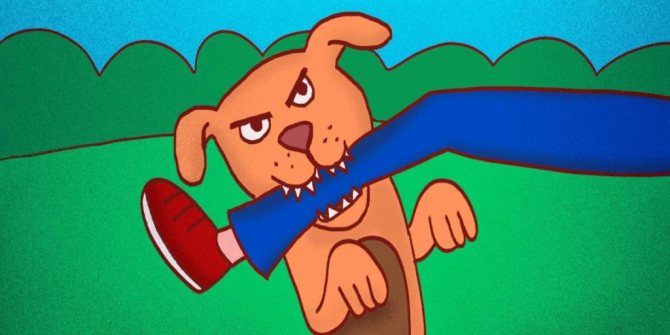
How to treat a dog bite
Treatment for a dog bite is prescribed by a doctor, taking into account the nature of the injury. You should seek professional medical help within 8 hours of the incident. The victim is prescribed antibiotics to prevent infection, as well as anti-inflammatory drugs.
In case of lacerations, the victim must be sent for an x-ray to make sure that there are no foreign bodies. Only after this can they be sewn up. Sutures are placed in cases of extensive wounds, severe bleeding, or for cosmetic purposes when a person has been bitten in the facial area.
If the bite results in a fracture or a dog's tooth remains in the wound, surgery is required.
If the dog's owner has been identified and the animal has been vaccinated against rabies, vaccination is not required. If a stray dog is bitten, or when the animal could not be caught, vaccination is mandatory. A tetanus vaccine is required if you are bitten.
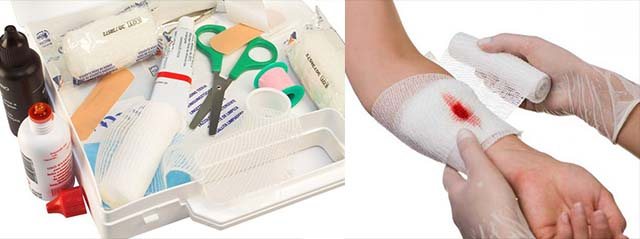
general information
Every year in our country several dozen deaths due to rabies are recorded. The virus from this disease is transmitted through the saliva of infected dogs. Hydrophobia may well lead to death two weeks after the onset of characteristic symptoms. But timely treatment of the problem will reduce the likelihood of infection to a minimum.
Dog bites can be of two types:
- Puncture wounds with damage to the outer skin. In this case, soft tissue rupture does not occur.
- Lacerations. There is noticeable damage to the epidermis, muscle and connective tissues. Such damage is quite dangerous and requires stitches.
Regardless of the type of bite, you should immediately go to the hospital (emergency room).
What to discuss with the dog owner
The owner of a dog that has bitten a person should take the phone number and ask whether the animal has been vaccinated against rabies.
After a bite, the dog owner must go to a veterinary clinic, where the animal will be examined and placed in quarantine for 10 days. Based on the decision of the veterinarian, the animal can undergo quarantine at home.
If the dog owner does not make contact with the injured party, it is necessary to contact the police, as this is a violation of the rules for keeping animals. Witnesses can help identify the owner.
If the bitten dog is a stray, the district administration is notified of the situation, which is obliged to begin catching it.
If the owner was not near the dog at the time of the bite, the victim should contact the administration. After catching a dog, its owner is identified by the tag attached to it.
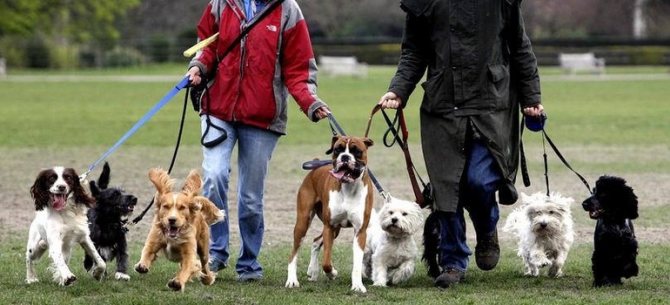
Compensation for damage under the law
Russian legislation establishes a certain degree of liability for such incidents. According to the law, if someone is bitten by a domestic dog, then all responsibility falls on its owner. He will have to provide the police with a certificate of vaccinations and prove that the pet is not infected with anything and has no health problems. The owner of the animal must pay the victim in full for treatment, and also pay a certain amount separately for moral damage.
Thus, knowledge of providing first aid to a victim can never be superfluous. If a person is bitten by a dog, you need to gather your will and act immediately. You can’t give in to panic: this can only ruin everything. Confusion and tears are more likely to hinder than help. Sometimes the life of a particular person depends on the speed of reaction of others and their basic ideas about safety.
Mad dog bite
A bite from a rabid dog is extremely dangerous and often leads to the death of the victim. You should pay attention to the behavior of your pet. The onset of the disease is indicated by:
- alertness;
- profuse drooling;
- vomit;
- poor appetite.
A dog with rabies at this stage eats non-edible foods and becomes overly capricious and affectionate.
Subsequently, the animal exhibits attacks of aggression and tries to escape. His body temperature rises to 40 degrees, then paralysis sets in. Gradually, a dog with rabies becomes exhausted and dies.
How to protect yourself?
At the moment, there is no effective treatment for rabies in the world. The only way to prevent the development of the disease is prevention. Non-specific prevention of social significance includes eliminating the source of infection and catching dogs. Pets need to have up-to-date vaccinations.
What to do if a dog bites you on the street, and its behavior was alarming and inappropriate? In this case, you need to immediately call an ambulance and adhere to the vaccination schedule.
When and how are rabies vaccinations given?
Rabies vaccination is done in several stages:
- Injections are placed in the shoulder area. In this case, you should adhere to a certain scheme. Injections are given on days 1, 3, 7, 14 after the bite.
- The fifth injection is administered 3 months after the wound, and the last one after 90 days.
- The patient must remain under medical supervision for 30 minutes after vaccination.
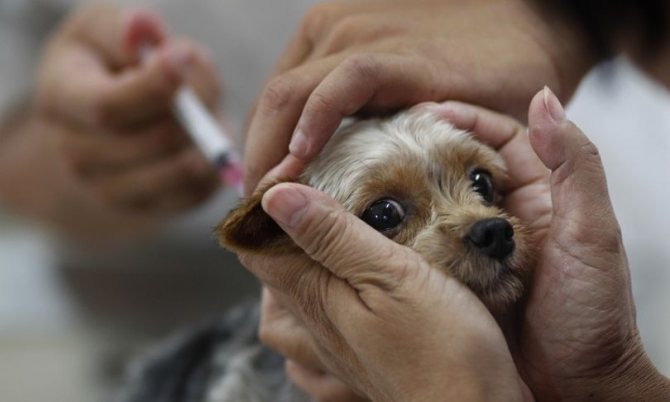
Before administration to the patient, the vaccine is diluted with water for injection. The resulting solution should be absolutely transparent. The substance is administered within 5 minutes after dilution.
Since the disease leads to the death of a person, there are no contraindications to rabies vaccination when bitten by an animal.
The rabies vaccine can be given before contact with a sick animal. As a rule, this is recommended for veterinarians, foresters, doctors, and travelers.
Contraindications to preventive vaccination are:
- allergy;
- pregnancy;
- chronic diseases.
Repeated vaccination for preventive purposes is carried out every year, then every three years. If the rabies vaccination schedule is violated, its effectiveness decreases.
Vaccination can be canceled only if it is confirmed that the dog does not have rabies and if no symptoms of the disease have appeared during 10 days of quarantine. In this case, the patient receives only 3 injections.
For the rabies vaccination to be effective, the victim must abstain from alcohol for the entire course of treatment. Taking immunosuppressants and glucocorticosteroids during this period is not allowed.
The rabies vaccine is generally well tolerated. Patients note swelling and redness in the injection area. Cases of weakness, headache, and allergies have been reported. If a victim develops neurological symptoms after vaccination, he or she must be urgently hospitalized.
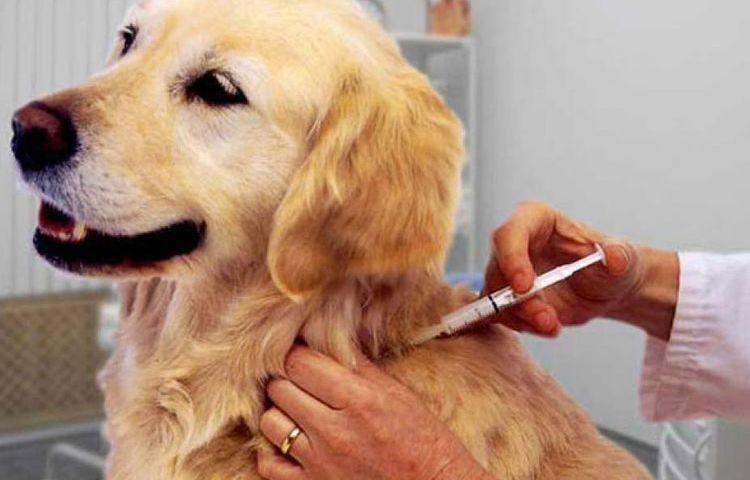
How to recognize the signs of rabies?
To help provide timely assistance, it is necessary to know the symptoms of rabies in a person after a dog bite. Adding to the danger is the fact that in most cases externally recognizing an infected dog is problematic due to the latent period of development of the disease.
Outwardly, the culprit of the injury may look quite healthy, but he will already be infected. Characteristic manifestations can make themselves felt only a few days after the incubation period comes to an end.
Often, ordinary people do not know that you can become infected with rabies from a dog even without a bite. If infected saliva gets on a scratch or even a small open wound, mucous membranes, this can trigger the development of the disease. Once in the body, the virus may not make itself felt for some time, gradually spreading, significantly damaging the functioning of the nervous system.
Causes of dog aggressiveness
Aggression in a dog develops gradually; the most common reason for this behavior is poor upbringing, violation of breeding and maintenance rules.
becomes aggressive if she feels insufficient attention from the owner, or if violence is shown towards her. An animal's behavior worsens if it is kept on a leash or in an enclosure.
Signs of aggression are:
- lowered head;
- flattened ears;
- drooping tail.
Most often, people are bitten by dogs of small breeds, whose aggressive behavior may be perceived by their owners as a prank and encouraged. As an animal gets older, it becomes more difficult to eliminate manifestations of aggression. Considering this, you should pay enough attention to training.
A dog can show aggression when it senses danger from a person and experiences a feeling of fear. Often the reason for this behavior is an attempt to protect its owner, especially if he is agitated.
Aggression in animals can be due to sexual reasons. During the fight for the attention of the female, the males demonstrate superiority to each other. If the owner approaches them at such a moment, a bite cannot be avoided.
Aggression in dogs increases during caring for offspring and its manifestations decrease as puppies grow up.
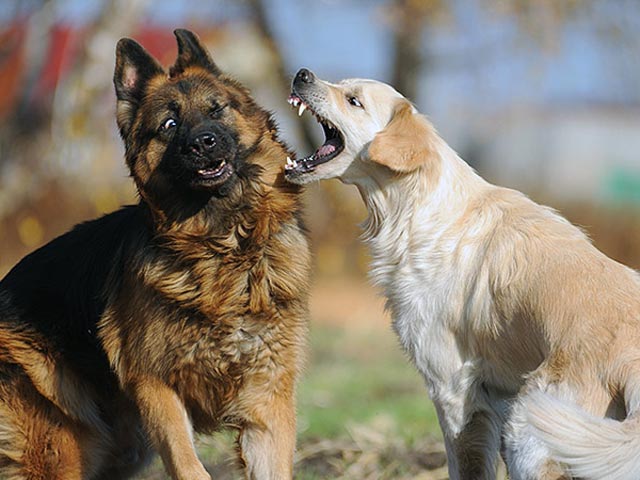
How to Avoid a Dog Bite
If you notice signs of aggression in a dog, you should be careful not to provoke the animal. First of all, you should remain calm. Fright and screams of a person will only provoke an attack.
- When encountering an aggressive animal, it is recommended to slow down and move in the opposite direction.
- Before doing this, you should try to distract the dog by throwing an object towards it.
- You should not look into the eyes of an aggressive dog, as it perceives this as a signal to act. It is better to observe the animal with peripheral vision.
- To prevent a dog from biting, it is necessary to pay enough attention to its training and socialization.
- You should not once again provoke the animal by disturbing its peace during sleep and eating.
- It is necessary to explain to children that they should not offend or provoke the animal.
- To prevent a dog bite, you should also avoid contact with stray animals. Children need to understand that petting and feeding them can be dangerous.
